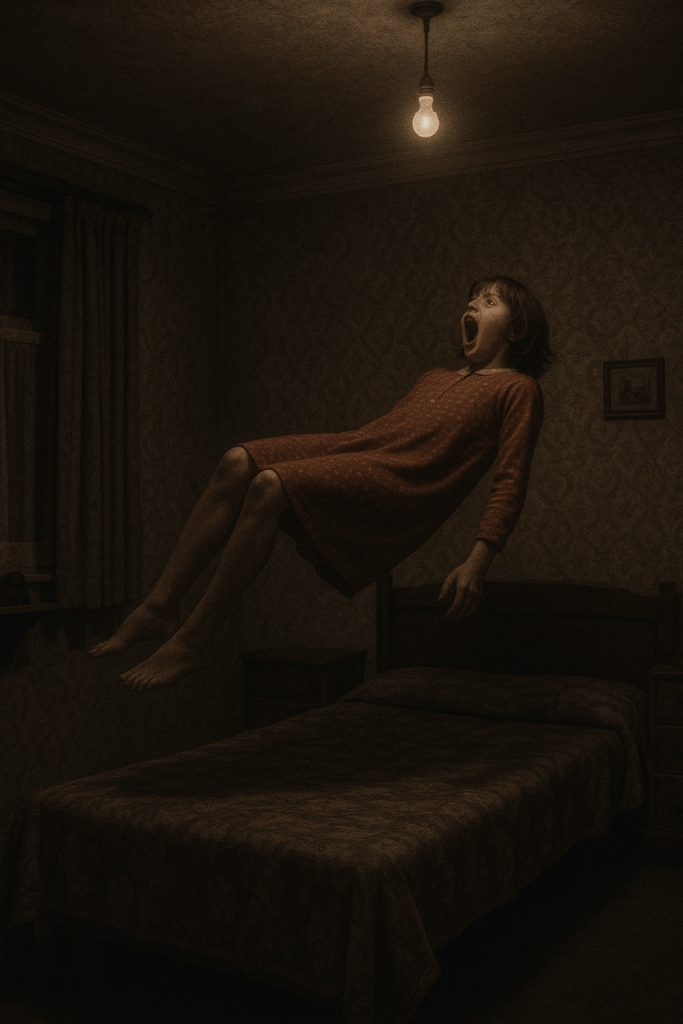ENFIELD, England — A series of disturbing events that tormented a family in a North London council house from 1977 to 1979 remains one of the most documented and controversial paranormal cases in history. The “Enfield Poltergeist,” as it came to be known, is supported by over 30 eyewitnesses, hours of audio recordings, and police testimony, yet is undermined by the subjects’ own admissions of hoaxing.
The ordeal for the Hodgson family began in August 1977, when single mother Peggy Hodgson called police to her home, reporting that furniture was moving on its own. A responding officer, WPC Carolyn Heeps, later signed an affidavit stating she witnessed an armchair “wobble and slide” about four feet across the floor for no discernible reason.
The phenomena soon escalated. Paranormal investigators Maurice Grosse and Guy Lyon Playfair documented marbles and LEGO bricks being thrown, matches spontaneously igniting, and a deep, gravelly voice that spoke through 11-year-old Janet Hodgson. The voice claimed to be Bill Wilkins, a man who had previously died in the house. The claim was later corroborated by Wilkins’ son, who confirmed his father had died of a brain hemorrhage in a downstairs armchair, just as the voice described.
The case’s most iconic evidence includes a series of photographs that appear to show Janet levitating or being thrown violently across her bedroom.
However, the case for a genuine haunting is complicated by significant evidence of fraud. The two Hodgson sisters, Janet and Margaret, later admitted to faking some of the incidents “to see if Mr. Grosse and Mr. Playfair would catch us”. Janet was caught on video bending spoons and was observed banging a broom handle on the ceiling to create knocking sounds.
Skeptics argue that the “Bill Wilkins” voice was a vocal trick produced using false vocal cords, a conclusion reached by a ventriloquist who analyzed the tapes. The famous “levitation” photos have also been widely debunked, with critics arguing they simply show an athletic girl jumping from her bed. Photographer Graham Morris, who took the images, has given conflicting statements, at one point saying it “looked to me that someone was jumping across the room,” a claim he later denied making.
The combination of credible third-party testimony and admitted trickery has left the Enfield Poltergeist in a state of permanent ambiguity, a puzzle that continues to fascinate paranormal researchers and inspire cultural works, including the film The Conjuring 2.


